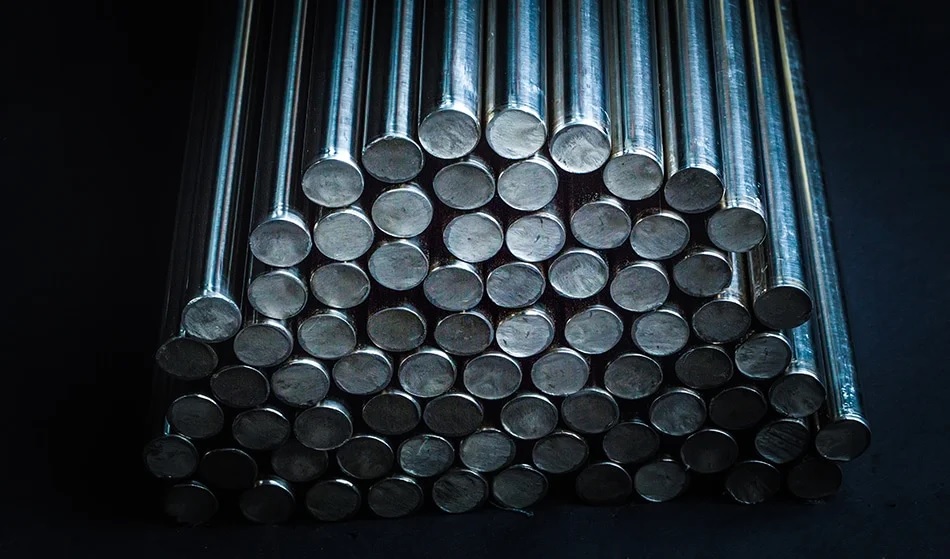Magnesium is the lightest structural metal used widely in industry. With a density of only 1.74 g/cm3, it is lighter than aluminum, zinc, and steel. The unique properties of magnesium make it an attractive alternative material in industries seeking to reduce weight yet retain strength. This article explores the growing applications of magnesium as the metal of the future, and Magnesium Rod metal of the future.
Emerging Importance Of Magnesium
Magnesium has emerged as an important material beyond its conventional uses due to advances in alloying, processing, and manufacturing technology. While widely used in the aerospace, automotive and electronics industries, new applications are growing rapidly. The push for lightweight materials across industries has driven increased R&D and commercialization of magnesium products. Some key drivers include:
– Fuel Efficiency Standards: Stricter emission standards are driving the auto industry to reduce vehicle weight for improved mileage. Magnesium alloys help achieve this goal.
– Aerospace Requirements: The aerospace industry demands high strength to weight ratios for weight savings. Magnesium alloys are prized for their strength and corrosion resistance properties.
– Miniaturization of Electronics: Consumer electronics are becoming increasingly smaller, thinner and lighter. Magnesium helps achieve these form factors while retaining durability.
– Sustainability Focus: Manufacturers recognize magnesium’s potentially recyclable properties. Its abundance and renewable sourcing are attractive from a sustainability standpoint.
– Alloy Development Advances: Continuous improvements in alloy formulations and processing yield stronger, more corrosion resistant and formable magnesium alloys.
As these trends continue, magnesium is poised to play an even broader role across industries seeking lightweighting solutions. Significant R&D investments ensure its potential will be further tapped.
Automotive Applications of Magnesium
The auto industry has been a major driver of magnesium usage. Weight savings through magnesium directly improve fuel efficiency, a top priority. Common automotive magnesium applications include:
– Engine Components: Cylinder heads, blocks, camshafts and covers are being cast from magnesium alloys for their heat dissipation and high strength properties.
– Transmission Components: Gears, cases and housings benefit from magnesium’s fatigue and impact resistance.
– Chassis Components: Seat frames, steering wheels and wheels are being produced from die cast magnesium.
– Electrical Components: Magnesium encases are used for ECU boxes, battery cases and exterior trims.
Leading auto manufacturers extensively use magnesium structural components and body panels. The BMW 3-Series contained over 60 lbs of magnesium components. Ongoing R&D is expanding its use in under-hood applications, chassis and body structures. If widely adopted, magnesium can enable significant fleet fuel economy and emissions gains.
Aerospace Innovations with Magnesium
The aerospace sector is an early adopter and major consumer of magnesium. High strength to weight properties make it ideal for lightweight aircraft structures. Notable magnesium aerospace innovations include:
– Aircraft Interiors: Interior panels, overhead stowage bins and passenger seats contain die cast magnesium parts.
– Airframe Components: Wing spars, rib supports, skin panels and engine mounts utilize die cast and rolled magnesium sheet alloys.
– Military Aircraft: Military jets extensively use magnesium in weapons bays, ordnance panels, landing gear and engine parts.
– Spacecraft: Satellites and rockets employ die cast and extruded magnesium for frames, panels and propellant tanks where weight is crucial.
Continuous R&D is enhancing aerospace grade alloys to perform in more structural roles at elevated temperatures. Advanced processing now permits net shape manufacturing of complex 3D magnesium parts. The metal’s increasing use will deliver even better performance and fuel savings for the aviation industry.
Electronics: Thinner and Lighter with Magnesium
Portable electronics performance demands lighter form factors without compromising durability. Magnesium meets this challenge through die casting of housings, frames and enclosures for smart devices, notebooks and power tools. Some examples include:
– Mobile Phones: Die cast magnesium encases enable thinner smart phones rivaling aluminum and plastics.
– Tablets: The metal provides a robust yet lightweight skeleton for tablet computers compared to heavier stainless steels.
– Laptops: Magnesium enclosures and interior bracings enable strong yet featherweight laptop designs popular with users.
B Housings for drills, saws and sanders are manufactured through advanced magnesium die casting for long life.
Ultra-thin yet durable magnesium alloys allow electronics to continue their miniaturization trajectory while retaining impact resistance. New coatings improve the alloy’s scratch resistance and appeal alternatives to plastics and aluminum.
Magnesium’s Future Potential
Research focuses on further removing the barriers to broader magnesium adoption. Improved corrosion resistance expands applications in harsh environments like under-hood auto parts. Novel processing allows sophisticated 3D net shape parts via additive manufacturing. Future advances may include:
– Bio-absorbable Implants: Magnesium alloys could provide temporary implant structures in the human body that are naturally re-absorbed over time.
– Concrete Reinforcement: Fiber reinforced magnesium concrete may enhance construction material properties compared to steel.
– 3D Printing of Parts: Additive manufacturing expands magnesium part geometries even for tooling and molds used in traditional die casting.
– Mass Transportation: High speed trains, ships, trucks and buses can derive performance benefits through strategic use of magnesium alloys.
– Recycling Innovation: Closed loop recycling systems ensure magnesium’s sustainability as an advanced lightweight material.
With its abundant natural reserves and sustainability potential, magnesium is positioned to revolutionize industries seeking to reduce weight, emissions and production costs through innovative material solutions. The metal’s future certainly looks bright.
In summary, this article provided an overview of the growing applications of magnesium across automotive, aerospace and electronics industries. The unique strength and lightweight properties alongside advances in production are driving magnesium’s emergence as an important structural metal of the future. Continuous R&D further expands its potential to deliver performance and sustainability gains through innovative new alloys and applications. Magnesium is increasingly fulfilling its promise as the solution to industries striving for lighter and greener products.
*Note:
- Source: CoherentMI, Public sources, Desk research
- We have leveraged AI tools to mine information and compile it

